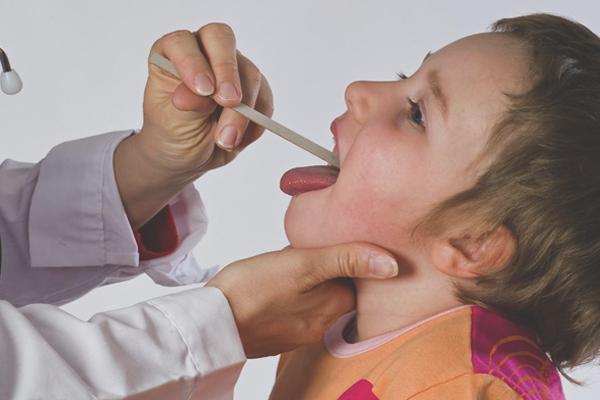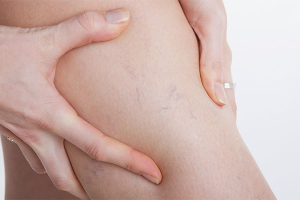The content of the article
Among otolaryngic diseases, adenoids occupy a special place. This is nothing more than an excessive pathological proliferation of lymphoid tissue, the so-called nasopharyngeal tonsil. This problem mainly affects children aged 1 to 15 years old, the peak falls on 3-7 years. But it is also found in adults.
Adenoids, it would be more correct to say, the nasopharyngeal tonsil, plays the protective role of the organism, since it is through it that the air passes, as well as all the microbes and infections in it. They settle on it, which begins to fight with them, producing immune cells. During illness, the amygdala grows in size. But if a child is sick very often, then it undergoes stress and, under the influence of regular work, grows and becomes inflamed at a chronic level.And this in turn makes the adenoids not a "doctor" but a direct source of infection.
Causes of adenoids
There are adenoids for various reasons:
The main one is frequent diseases and their chronic course. For example, it may be flu, tonsillitis, rhinitis, ARVI.
- Heredity.
- Bad ecology.
- Transferring colds mom while carrying a child.
- Sometimes vaccinations can be the cause.
- The transfer of disease in infancy.
Signs and symptoms of adenoids
Suspecting the presence of adenoids is quite simple. You only need to watch the child. So about the adenoids says:
- Snore.
- Frequent nasal congestion.
- Soreness of lymph nodes.
- The child constantly or often breathes through the mouth.
- Observed hearing loss.
- Sharp and incomprehensible cough in the night.
- Inattention of the child, as well as his quick fatigue.
- Earache and congestion.
- In the morning there is a cough, which is caused by the accumulation of mucus in the nasopharynx.
- Sleep with open mouth and wheezing.
- Very frequent incidence of ENT diseases.
- When talking, you can notice the nasal voices or the feeling that the child says "in the nose"
Degrees of adenoids
The development of adenoids is of three degrees:
- In this case, the child has no difficulty breathing during the day. But at night, due to an increase in the tonsil, breathing is difficult.
- It is characterized by snoring in sleep, breathing through the mouth, and also difficulty breathing during the whole day.
- Adenoids grow so much that they can completely block the access of air, because of what the child breathes only mouth.
How to get rid of adenoids
Adenoids are a very unpleasant problem. Get rid of it promptly. But even the operation does not give an absolute guarantee that the adenoids will not grow again. As a rule, patients with an adenotomy are exposed to patients with 3 degrees of lymphatic tonsil overgrowth, since in this case it blocks the nasal passage and the child can simply suffocate.
Before you go on removal of adenoids, you must undergo a full examination by a doctor, eliminate the infection if you are sick, as well as all the inflammatory processes.
The operation is very simple and takes only 10-20 minutes. Removal of the adenoids themselves - 2-3 minutes. Adenotomy is performed under general and general anesthesia.Children have recently been operated on under general anesthesia. This reduces the psychological trauma of the child.
Surgery can be of two types: endoscopic and using a laser beam. The second method is rarely used by doctors because of unflattering reviews about it. Yes, the laser effect is much sparing than a scalpel. But the laser can lead to such complications as allergization with severe suffocation. Also, the occurrence of scars in the nasopharyngeal cavity, which will lead to a violation of its functionality, and, consequently, may require a second operation, but to remove scars.
During endoscopic surgery, after the child is put into anesthesia, his mouth is opened, the location of the adenoids is determined and a special curette is introduced into the nasopharyngeal cavity. With its help, cut off and remove the overgrown tissue of the tonsils. Cauterization of adenoids using diathermy can also be performed. The completion of the operation occurs only when the bleeding stops completely.
After operative complications are extremely rare. After the procedure, calm is recommended, bed rest is desirable.The room in which the child is located must be well moistened. You also need to prevent overheating and avoid physical exertion in the first 1-2 weeks. After the procedure, you can not eat solid food and hot.
How to get rid of adenoids without surgery
Even if the doctor has prescribed an operation for you, you should not be in a hurry. Since the amygdala fights infection, it is desirable to keep it. For this you can use the various recommendations of traditional medicine. Just do not forget that the chosen methods must be agreed with your doctor before use.
Homeopathic approach
For treatment, various homeopathic preparations are used, which have a beneficial effect on both the adenoids and the entire body. But do not forget that in this method the drugs do not act instantly and the result will appear only after some time.
Drug approach
In the treatment of adenoids are suitable in a complex and immediately prescribed drugs of different effects:
- Anti-inflammatory drugs.
- Astringent drugs that dry the nasal mucosa.For example, it can be “Protorgol”.
- Preparations to reduce mucosal edema, for example, Vibrocyl, Euphorbium compositum, Olynth.
- Antiallergic medicines.
Folk ways
- Washing the nasopharynx with beet juice. But this method is not suitable for every child.
- Instill twice a day water propolis tincture mixed with butter. Also, this mixture is recommended to take inside three times a day on the floor of a tablespoon.
- Herbal collection is used. To do this, mix two parts of sage leaves, plantain, field horsetail and 3 parts of calendula and chamomile flowers. Next, pour a glass of boiling water 1 tbsp. herbal mixture and cool. The resulting infusion is taken throughout the day and always in the form of heat. You can also strain the infusion and use it to wash the nose twice a day. The duration of treatment is 3 days.
- To reduce the inflammatory processes in the adenoids, you can use the leaves of black currant. They are taken in the amount of 2 tablespoons, poured half a liter of boiling water and insist for half an hour. Warm infusion drink in the form of a warm food 0.5-1 glass.
- Mix in a container 2 tbsp. rosehip berries in crushed form, the same amount of chamomile. Add 0.5 tsp. flowers of viburnum and calendula and 1 tbsp. currant leaves.From the resulting mass take 1 tbsp. put in a thermos and pour 1 tbsp. boiling water. Let it brew for 6-8 hours. Pour into a thermos. Then the infusion is filtered through several layers of gauze and add a drop of fir oil. It is recommended to use the resulting infusion for instillation into the nose 1-2 times a day, 2-4 drops in each nostril.
Attention! Using some of the suggested recipes is unacceptable if the child is allergic to honey, herbs, or other ingredients. Otherwise, the result will be disastrous.
Prevention of adenoids
In order to avoid the occurrence of adenoids, the following recommendations should be observed:
- Engaged in strengthening the immune system.
- Completely cure arisen headaches and infectious diseases of the nasopharynx.
- In the presence of allergic diseases to do and their treatment.
- During the epidemic of infectious diseases, it is undesirable to visit kindergartens and schools, as well as places of large crowds.
Treatment of adenoids is not just their removal and restoration of the child’s free breathing. This is a complex work that includes both treatment and prevention.Even if the doctor “prescribed” an appointment for surgery, you should not hurry, because adenoids are a kind of “builder” of immunity. Therefore, first try to treat the problem, and then think about the operation.
Video: how to treat adenoids in children (folk recipes)












To send